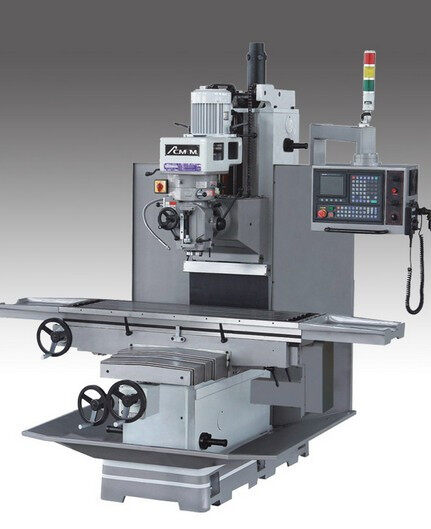E-poçt formatında xəta
emailCannotEmpty
emailDoesExist
pwdLetterLimtTip
inconsistentPwd
pwdLetterLimtTip
inconsistentPwd

Xəbərlər
Several Thread Machining Methods Commonly Used in CNC Machining Center(1)
Thread machining is one of the very important applications of the CNC machining center. The machining quality and efficiency of thread will directly affect the machining quality of parts and the production efficiency of the machining center. With the improvement of the performance of the CNC machining center and the improvement of cutting tools, the method of thread machining is also constantly improved, and the accuracy and efficiency of thread machining are also gradually improved. To enable technicians to reasonably select thread processing methods in processing, improve production efficiency and avoid quality accidents, several thread processing methods commonly used in CNC machining centers in practice are summarized as follows:

Tap machining method
- Classification and characteristics of tap machining
Using a tap to process threaded holes is a common processing method, which is mainly applicable to threaded holes with small diameters (d<30) and low accuracy requirements.
In the 1980s, flexible tapping methods were adopted for threaded holes, that is, flexible tapping collets were used to hold taps, and the tapping collets could be used for axial compensation to compensate for the feed error caused by the non synchronization between the axial feed of the machine tool and the spindle speed, to ensure the correct pitch. The flexible tapping chuck has a complex structure, high cost, easy damage, and low processing efficiency. In recent years, the performance of the CNC machining center has gradually improved, and the rigid tapping function has become the basic configuration of the CNC machining center.
Therefore, rigid tapping has become the main method of thread machining at present. That is, hold the tap with a rigid spring collet, and the feed of the spindle is consistent with the spindle speed controlled by the machine tool. Compared with the flexible tapping collet, the spring collet has the advantages of simple structure, low price, and wide application. In addition to holding the tap, it can also hold end mills, drills, and other tools, which can reduce the cost of tools. At the same time, rigid tapping can be used for high-speed cutting, improve the efficiency of the machining center and reduce the manufacturing cost.
- Determination of thread bottom hole before tapping
The processing of the thread bottom hole has a great impact on the life of the tap and the quality of thread processing. Generally, the diameter of the threaded bottom hole drill is close to the upper limit of the diameter tolerance of the threaded bottom hole.
For example, if the bottom hole diameter of the M8 threaded hole is Ф 6.7 + 0.27mm, select the drill bit diameter as Ф 6.9mm。 In this way, the machining allowance of the tap can be reduced, the load of the tap can be reduced, and the service life of the tap can be improved.
- Tap selection
When selecting taps, first of all, the corresponding taps must be selected according to the processed materials. The tool company produces different types of taps according to the different processing materials, and special attention should be paid to the selection.
Because the tap is very sensitive to the processed material compared with the milling cutter and boring cutter. For example, using a tap for processing cast iron to process aluminum parts is easy to causes thread dropping, disorderly threading, and even tap breaking, resulting in workpiece scrapping. Secondly, pay attention to the difference between through-hole taps and blind hole taps. The front guide of through-hole taps is long, and the chip removal is the front chip. The front guide of the blind hole is short, and the chip removal is the rear chip. Processing blind holes with through-hole taps cannot guarantee the depth of thread processing. Moreover, if a flexible tapping collet is used, it should also be noted that the diameter of the tap handle and the width of the square should be the same as the tapping collet; The diameter of the tap shank for rigid tapping shall be the same as that of the spring jacket. In short, only a reasonable selection of taps can ensure smooth processing.
- CNC programming of tap machining
The programming of tap machining is relatively simple. Now machining centers are generally solidified with tapping subroutines, which only need to assign values to each parameter.
However, it should be noted that the meaning of some parameters is different due to different NC systems and different subroutine formats. For example, the programming format of the Siemens 840C control system is g84 X_ Y_ R2_ R3_ R4_ R5_ R6_ R7_ R8_ R9_ R10_ R13_. When programming, you only need to assign values to these 12 parameters.
Make a purchase of small cnc vertical machining center, cnc gantry type machining center, mini vertical machining center from China, you can get them at a good price if you have a large quantity. We hope to be your long-term partner.

